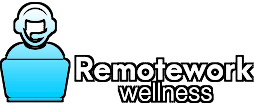
Running a small business isn’t just about having a great product or loyal customers — it’s about mastering the numbers behind the scenes. For many small business owners, financial knowledge is the invisible skill that determines whether their venture grows, stalls, or disappears. Understanding cash flow, pricing, margins, and debt management isn’t optional — it’s survival fuel.
Major Insights
Financial knowledge gives small business owners control. It helps you:
- Avoid expensive mistakes.
- Plan smarter for taxes and growth.
- Manage cash flow with confidence.
- Understand your true profit margins.
- Make better long-term strategic decisions.
In short: Knowing your finances = owning your future.
Why Financial Literacy Shapes Every Business Decision
Money isn’t just accounting. It’s the language of your business. If you can’t read it, you can’t lead it.
Think of it like this:
- Your cash flow statement is your oxygen tank.
- Your balance sheet is your fitness report.
- Your P&L is your daily nutrition log.
When you learn to interpret these correctly, you stop reacting to problems and start predicting them.
How Financial Know-How Powers Growth
| Financial Skill | How It Helps | Real-World Example |
| Budgeting | Prevents waste, tracks goals | Planning marketing spend based on seasonal cash flow |
| Forecasting | Enables growth planning | Anticipating demand and adjusting inventory |
| Cost Analysis | Boosts profit margins | Identifying which services drain time but don’t pay well |
| Tax Strategy | Frees up capital | Claiming small business deductions and reinvesting savings |
| Financial Ratios | Reveals health | Using liquidity ratios to avoid cash crunches |
FAQ: Common Financial Questions from Small Business Owners
Q: I’m not “numbers smart.” Do I really need to handle my own finances?
A: You don’t have to do it all yourself — but you do need to understand what your accountant is talking about. It’s your business, after all.
Q: How often should I review my financial reports?
A: Monthly at minimum. Weekly is even better, especially during volatile growth or tight cash flow periods.
Q: Is financial software worth it?
A: Absolutely. Tools like QuickBooks, FreshBooks, and Wave can automate tracking, invoices, and reports — freeing up your brain for strategy.
Q: How do I get better at financial management without going back to school full-time?
A: Podcasts, short online courses, and professional networks can help. Resources like Score.org and Investopedia’s Small Business Guide are great starting points.
The “Know-Your-Numbers” How-To Checklist
Step-by-step for mastering your financial foundations:
- Track every penny. Use digital tools to monitor all income and expenses.
- Understand your cash flow. Know when money comes in — and when it leaves.
- Set a profit goal. Work backward: price your offerings based on what you need to earn.
- Forecast quarterly. Use last year’s data to plan the next 90 days.
- Keep taxes in mind year-round. Don’t scramble in April — set aside monthly reserves.
- Review debt and credit. Check your business credit score regularly at Nav.com.
- Build a relationship with a financial advisor. They don’t just crunch numbers — they prevent disasters.
Why Learning Never Stops: Building Your Financial Acumen
Smart business owners know that the learning curve never flattens. Expanding your understanding of finance — from cash flow to investment decisions — keeps you agile in an ever-changing economy.
You might even consider formal education to deepen that skillset. When you take a look at this opportunity to earn an online business degree, you’ll find that programs like a master’s in business administration teach leadership, strategic planning, financial management, and data-driven decision-making — critical skills that apply to every aspect of running a company. Plus, earning your degree online means you can continue managing your business while you learn.
Product Spotlight: QuickBooks Online
If there’s one tool that’s revolutionized how small business owners handle finances, it’s QuickBooks Online. It automates invoices, tracks expenses, integrates with your bank, and even helps you forecast cash flow. It’s a simple but powerful step toward gaining full visibility into your financial health.
Other useful financial resources include:
- Gusto – payroll and HR management made easy.
- Xero – intuitive for small business teams.
- Bench – bookkeeping + real human support.
- Fundera – compare small business loan options.
- Shopify Capital – financing tailored for eCommerce owners.
Key Takeaways
- Financial literacy = decision-making power.
- Numbers tell the truth about what’s working.
- Budgeting and forecasting turn chaos into clarity.
- Cash flow mastery keeps you calm in lean seasons.
- Learning finance is like compound interest — it pays you back every year.
Small business success doesn’t hinge on luck — it depends on understanding your financial story. The stronger your grasp on budgets, margins, and growth strategies, the more resilient your business becomes. When you know your numbers, you don’t just survive — you scale.
Eleanor Wyatt



